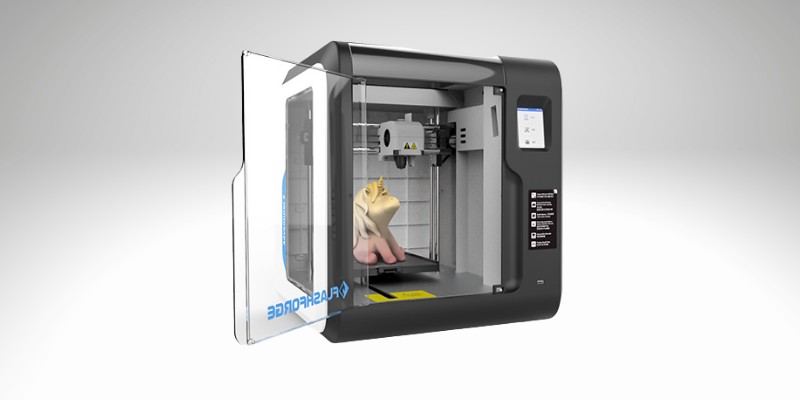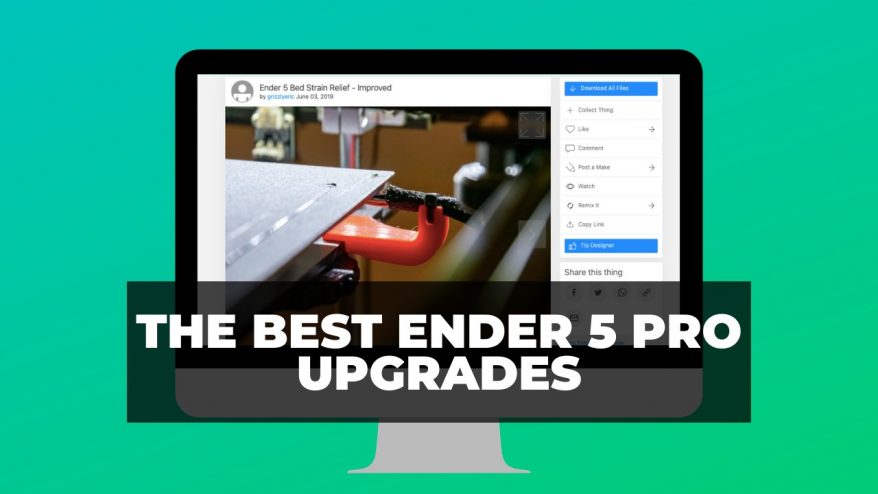
Prusa printers offer quality parts, unrivaled usability, support, and beautifully tuned printer profiles –they’re some of the best 3D printers around.
However, while they are undoubtedly fantastic machines, there are valid reasons why you may want to consider a Prusa alternative.
Prusa’s products don’t come cheap, especially standing shoulder to shoulder with comparable printers from other manufacturers. You pay for the trust and quality synonymous with Prusa, but for many of us, our budget either won’t stretch that far, or we’d prefer to save the money for a similar 3D printer.
Furthermore, while boasting premium hardware, Prusa printers don’t have a dual extruder, and you’ll need to pay extra for an enclosure.
While far more affordable than its MK3S+ sibling, the Prusa MINI has a cramped, below-average build volume for the price, for example.
Prusa’s popularity has also come back to bite the company; lead times hang around 3-4 weeks at best, expanding to 13-14 weeks in some cases. An excessively long time to wait when you can order a Prusa alternative right now and likely receive it in the next few days.
For all these reasons and for people who’d simply rather avoid boarding the Prusa bandwagon, we’ve compiled a list of the best Prusa alternatives and Prusa clones.
We’ve divided our recommendations into alternatives to the Prusa i3 MK3S+, Prusa Mini, and Prusa SL1S, so you can quickly jump to what’s of interest.
3DSourced is reader-supported. When you buy through links on our site, we may earn an affiliate commission. Learn more
Prusa i3 MK3S+ Alternatives/Clones
MatterHackers Pulse / Pulse XE
- Price: $899.00 — Check on Matterhackers here

Pros
Smooth, out-of-the-box printing.
Feels like an i3 for $200 less.
A wealth of customizable options.
Cons
Lacks ventilation.
While we’d be the first to shepherd you away from most Prusa clones as they’re poorly made and have low-quality parts, the MatterHackers Pulse is one we’ll happily recommend.
It’s based on the open-source Prusa i3 design, tuned to perfection for smooth, out-of-the-box printing, and pieced together with quality components throughout. The Pulse looks, behaves, and feels like an i3 but costs $200 less than the pre-assembled i3 MK3S+.
Another notable strong point is that MatterHackers offers a wealth of customization options – enclosure kit, deluxe high-resolution LCD, various build plates and hot ends, including an E3 All-Metal V6 and an Olsson Ruby nozzle, and a Bondtech BMG extruder.
These naturally add to the overall cost but make the MatterHackers Pulse stand out from Prusa’s fixed, default configuration.
The MatterHackers Pulse XE also deserves mention for those wanting to work with exotic materials.
It’s essentially a souped-up Pulse with an E3D V6 HotEnd, hardened steel nozzle, and Bondtech BMG Extruder thrown in to make it capable of handling the most temperature-sensitive and abrasive materials, like Nylon X, carbon fiber, and glass-filled filament.
Common applications where the Pulse would shine include rapid prototyping, drones, RC cars, phones, gears, and bolts.
Shipped fully assembled and priced at $899.00, the MatterHackers Pulse XE costs less than the pre-assembled Prusa i3 MK3S+. You can also tag on various extras just like the standard Pulse.
AnyCubic Vyper
- Price: $359— Check on Anycubic here

Pros
Can be built in 30 minutes.
Automatic leveling features (not common in this price range).
Excellent fan cooling system.
Cons
A little noisier than some of its competition.
It would be a disservice to both the Prusa i3 MK3S+ and the Anycubic Vyper to compare them directly.
The former is a premium consumer printer priced close to $1000; the latter is an impressive but low-cost printer rivaling the likes of the Ender 3.
However, where the two converge is that they aim to eradicate the initial and sometimes lengthy, hands-on troubleshooting and setup that put many off trying out 3D printing.
Don’t get us wrong; the Vyper is no Prusa clone but does a damn fine job of trying to match the beginner-friendly feature set and experience.
The Anycubic Vyper boasts one-touch automatic bed leveling, a large touch screen, a textured spring steel magnetic bed, 32-bit mainboard, dual-gear extruder, and a good-sized 245 x 245 x 260 mm build volume.
These are all features you’d expect in a printer with a price tag of considerably more than $359.
If the Prusa i3 MK3S+ is out of your price range and you want an easy time exploring 3D printing for the first time, the Anycubic Vyper is a reliable and solid alternative.
Flashforge Creator Pro 2
- Price: $649 — Check on Flashforge here

Pros
IDEX dual extruders for multi-color or multi-material 3D printing.
The dual direct drive print heads can print duplicates simultaneously.
Cons
Small build area for the price.
While the Prusa i3 MK3S+ is a mighty machine capable of handling all the go-to maker favorites like PLA, it lacks an enclosure or dual extrusion, which means a hard time printing demanding filament like ABS or complex multiple material prints.
The Creator Pro 2 lines up as a good alternative as it plugs both those gaps with a fully-enclosed chamber and an independent dual extruder system.
All this at a reasonable $650 – a genuine steal for an IDEX-equipped printer.
The dual direct drive print heads can print duplicates simultaneously, pump out mirrored models, combine different material types and colors, or up your chances of landing a tricky print with soluble supports.
Versatility is the theme here, and the Creator Pro 2 delivers whether you’re using PLA, ABS, PLA, or PETG.
While the Creator Pro 2 bests the Prusa i3 MK3S+ in some respects, it lags behind in others.
The printer doesn’t have automatic bed leveling. The 200 x 148 x 150 mm build volume measures below average. The bundled FlashPrint software is underwhelming as slicers go.
It’s also a tinkerer’s printer, a machine that needs taming to get the best results, unlike the Prusa i3, which shines with little effort on the user’s part.
Prusa MINI Alternatives
Creality Ender 3
- Price: $189.00 — Check on Creality official store here

Pros
Best low-cost 3D printer kits available.
Reliable and durable.
Very upgradeable.
Cons
There are more advanced 3D printers with newer features available.
Because Ender 3 is a maker favorite and an alternative to pretty much any 3D printer out there because it’s so upgrade-friendly and affordable, we’d be remiss not to mention Creality’s flagship.
The basic Ender 3 is relatively barebones in terms of features compared to the Prusa MINI.
It requires manual bed leveling, features a decent, if unimpressive magnetic plate and a pretty standard Bowden system.
Unlike the Prusa, it also involves DIY assembly.
Yet, it costs roughly half as much, giving you a strong foundation to build on and upgrade to suit your needs. It also has a larger 220 x 220 x 250 mm build volume than the MINI’s tight 180 x 180 x 180 mm.
The Ender 3 S1 shares price parity with the Prusa Mini.
It has similar features, including automatic bed leveling, a direct drive extruder, a filament detector, and a PC-coated spring steel magnetic removable bed.
Like the stock Ender 3, the build volume is considerably larger than the Prusa MINI’s.
For us, the Ender 3 S1 represents a strong Prusa MINI alternative if you need more print area and appreciate the upgrade potential. It’s not a direct Prusa MINI clone by any stretch of the imagination but is a solid alternative.
Read more: we tested and reviewed the Ender 3 S1 Pro
Flashforge Adventurer 3
- Price: $359.00 — Check on Flashforge here

Pros
Great features for the price.
Affordable.
Beginner-friendly.
Cons
Small build volume.
Not much room for tinkering and upgrades.
Much like the i3 MK3S+, the Prusa Mini’s biggest negative is the lack of an enclosure for printing heat-sensitive materials.
The minimalist and lightweight Flashforge Adventurer 3 is a similarly configured printer that’s well worth considering as a Prusa MINI alternative.
It has ease of use as a core focus, a compact footprint, and a smaller-than-average 150 x 150 x 150 mm build volume printer but goes a step further with a fully-enclosed chamber.
This means it can tackle ABS without breaking a sweat, along with staples like PLA.
While it may lack some of the more advanced features of the MINI, it certainly holds its own with leveling-less printing (it’s factory calibrated and works out-of-the-box), automatic filament loading and unloading, and a detachable nozzle that opens the door for a high-temperature nozzle to expand material compatibility.
Even more enticing is that Flashforge prices the Adventurer 3 at around $50.00 less than the Prusa MINI, making it more attractive to those who can’t stretch their budget to $400.00.
Prusa SL1S Speed Alternatives
Anycubic Photon M3 Plus
- Price: Check on Anycubic here

Pros
Large build volume.
Textured build plate offering superb print adhesion.
Fast and highly productive.
Cons
Fans are very noisy.
As fast and fantastic a resin printer the Prusa’s SL1S Speed is, there’s no avoiding the hefty $2,000 price tag.
This is especially pronounced when considering the ever-expanding budget resin printer segment, spearheaded by affordable machines like Elegoo’s $200 Mars 2.
Even between those two price poles, we have viable alternatives hitting that sweet spot between price and features, the most interesting of which is the Anycubic Photon M3 Plus.
The Prusa SL1S Speed is overall a better machine, excelling at Prusa’s signature ability to deliver a predictable and high-quality printing experience day in, day out, but in some respects, the Anycubic Photon M3 Plus takes the lead.
It features a large 245 x 197 x 122 mm build volume, 9.25-inch monochrome screen capable of a 6K 5760 x 3600 resolution, and an automatic resin feeding system.
The Anycubic Photon M3 Plus is also no turtle when it comes to speed, either, pushing a top-end of 100 mm/h.
As for the price, Anycubic proposes you pay $699.00 for the Photon M3 Plus. A good deal considering the large print volume and features. If the Prusa SL1S Speed’s asking price exceeds your budget, then the Anycubic Photon M3 Plus is one of the better just-about-affordable resin Prusa alternatives.
Anycubic Mono X 6K
- Price: $569.00 — Check on Anycubic here

Pros
Anycubic’s market-leading resin print quality.
Reasonably priced for the specs it offers.
Cons
Average build volume.
Tongue-twister name aside, the Mono X 6K is another fantastic alternative to the Prusa SL1S Speed from the ever-prolific Anycubic.
Like the M3 Plus, the Anycubic Mono X 6 K’s biggest brag over the Prusa SL1S Speed is the price – $689.00 (often dropping to under $550.00 in Anycubic’s regularly-scheduled sales) to $2,000.
If that alone isn’t enough to tempt you, then the Anycubic Mono X 6K boasts an enviable set of specifications. It has a 9.25-inch monochrome screen, 6K 5760 x 3600 resolution, 34 micron XY resolution, and a top speed of 80 mm/h.
Though the 245 x 197 x 122 print area falls behind the M3 Plus, it certainly outclasses the Prusa SL1S Speed’s comparatively dainty 127 x 80 x 150 mm.
Once again, almost double the workable area on two axes for a fraction of the cost.
Unlike the Prusa SL1S Speed, which has you wait three weeks at best before dropping on your doorstep, the Anycubic Mono X 6K should be with you in a matter of days.
Prusa Alternatives – FAQs
What printer is better than Prusa?
As far as providing a predictable, user-friendly printing experience and systematically high-quality prints, few other 3D printers rival the mighty Prusa line-up.
Though Prusa clones exist, with some excellent attempts, such as the MatterHackers Pulse, none quite live up to their inspiration.
Is Prusa worth the extra money?
We’re a little biased here given our mission to democratize 3D printing and the way Prusa plays into that with usability as a core feature, so a resounding yes.
But, conscious that Prusa machines demand a hefty premium, there are some excellent alternatives worth considering for thrifty makers.
Is the Prusa i3 MK3S+ worth it?
Best-in-class parts, unmatched usability, industry-leading support, and quality prints every time – all these factors make buying a Prusa i3 MK3S+ well worth the price of entry.
That said, the cost can be prohibitive for many just starting their 3D printing journey; the only real gripe we have with the excellent Prusa i3 MK3S+.
Are Prusa clones worth it?
As with all attempts at mimicking the best, finding the quality among a sea of shoddy pretenders is the key.
If you can track down a solid Prusa clone, it’s indeed worth it. The MatterHackers Pulse XE springs to mind, as does the impressive FYSETC Prusa clone, both based on the open-source i3 design.
How do you make a Prusa clone?
With a keen interest in DIY projects and a lot of patience, it’s indeed possible to piece together a Prusa clone from scratch.
You’ll need to gather up the required parts, delve into the open-source documentation provided by Prusa, and be prepared to troubleshoot your way to a functional printer.
Articles we recommend:
- Ender 3 Alternatives
- Prusa i3 MK3S+ or Prusa MINI+: Which Should You Buy?
- Prusa MINI vs Creality Ender 3 (Pro/V2)
- Prusa i3 MK3S+ vs Ender 3 Pro/V2
- The best Prusa 3D printers for you – compared
- Prusa enclosures – DIY and buyable options
- Elegoo Mars 3 vs Elegoo Saturn
- Anycubic Mono X vs Elegoo Saturn
- Flashforge Adventurer 3 vs 3 Lite




